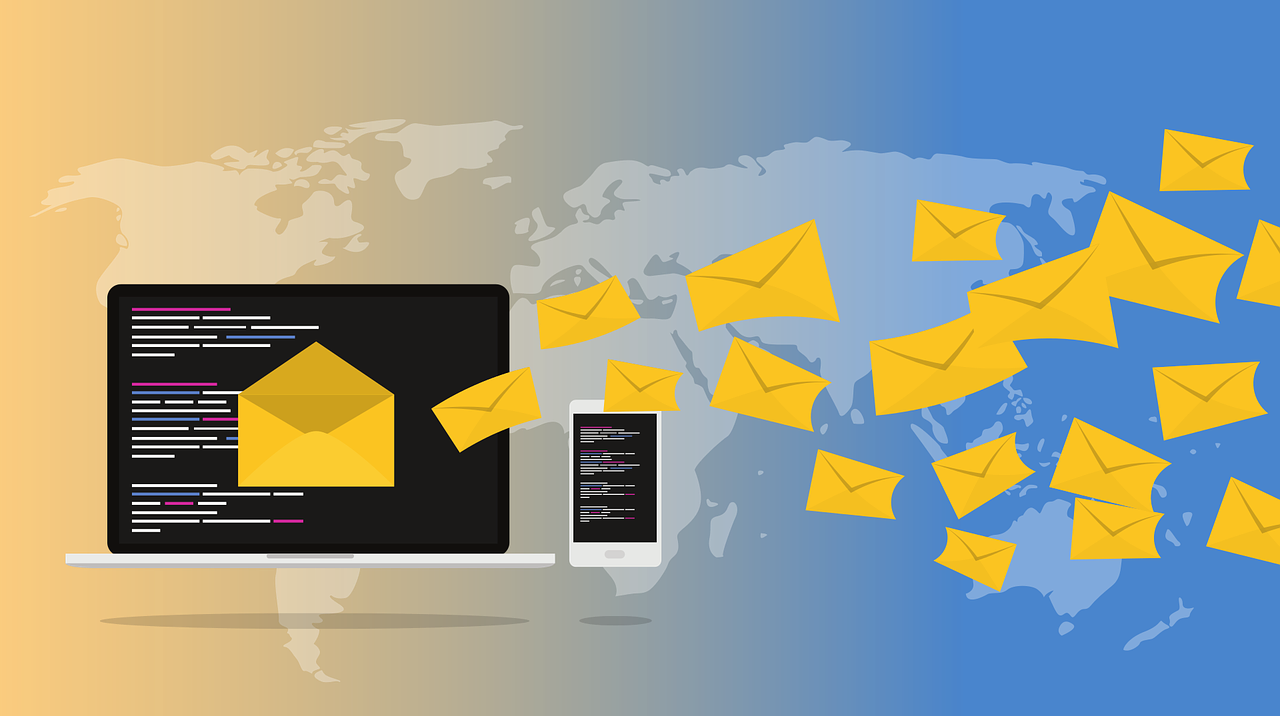
Source: Somebody Marketing
Although marketing landscape changes at an incredibly fast pace, but email marketing is still the most important and effective way to reach your targeted audience. When it comes to successful email marketing, you need to consider Email Design as one of the most underlying factors. Hence, it is essential for B2B marketers to adapt best practices in Email Design to increase more visibility, drive high sales conversion and get more business opportunities.
Before diving into Email Design Best Practices, let’s start with the basics!
What is Email Design?
Email design is a process of strategically designing and generating an email that resonates with your target audience, specifically your current email subscribers and clients. Hence, having a great email design is important as it engages your recipients and captures attention of your targeted audience.
When it comes to designing marketing emails, there is no magic formula that will get you impressive results all at once. But while setting up an email marketing campaign, the design of your email is definitely a significant aspect to consider. If your design does not relate to your email subscribers, then most of your emails get marked as spam, deleted, or completely ignored. To make sure your marketing emails are as effective as possible, you have to consider several different aspects of your email design carefully.
Here is the complete checklist of some important email design best practices for you to consider before rolling out your next email marketing campaign.
Use Interesting Subject Lines
Your email subject line should be something that grabs the attention of your subscribers and gets them interested enough to keep reading. Hence, make it relatively short but as informative as possible. The ideal email subject line should be a good, interesting summary that determines people what they can expect from reading your email in the fewest possible characters. Therefore, always aim to limit your email subject line to 50 characters or less. Here you can see average read rate of emails based on the length of subject lines.

Source: Return Path
If your subject line includes too many characters, it may get truncated in some of the email mailbox providers. Because of this, your email may lose its meaning and impact or even end up looking like funny or awkward at some instances. Hence, to make sure your message comes across all mailbox providers, you need to keep your subject lines relatively short.
Use Perfect Pre-Header
From a recipient’s point of view, pre header is the next thing they look after a subject line. Hence, it should be optimized for mobile, desktop, web mails as it’s the second most important thing readers make a decision to open & read the email further. It can provide useful context to the subject line and assist in increasing the open rates.
Here are the best practices for formatting a Pre-Header:
- It should be short and represents the exact point.
- Limit Pre-header length within 40-70 characters.
- The Pre-header text and the subject line should complement each other for better performance.
Use Right Fonts
The fonts you choose in the emails can define the look and feel of your message. While there are hundreds and thousands of fonts available on the internet, not all of them will be the right fit for email communication. In general, you can use any font that fits your visual brand identity in static images and GIFs. But in text, you have to stick for system fonts and web fonts.
- System fonts are the types of fonts that can be displayed on all devices or within any application. These include Georgia, Times New Roman, and Verdana.
- Web fonts are widely supported, and can be rendered differently on your recipients’ device. These include: Roboto, Lato, and Montserrat.
Hence, it is highly recommended – either stick to system fonts, or use web fonts. Ideally, you have to use up to two different fonts while designing email templates – one for the header section and one for the main text and CTAs.
Use Mobile-Responsive Emails
With more than half-of your recipients opening your emails in mobile, it’s essential to optimize your email design that fits for both desktops and smartphones. You can optimize your emails for small screens by implementing these design best practices:
- Implement Minimalistic design
- Don’t use complex headers, extra calls-to-actions (CTAs), or clutter
- Use High-contrast design set at low brightness for mobile screens
- Use Single column layout
- Place Easy-to-view content
- Set mobile-friendly links
- Keep Smaller image files
Incorporate Unique Visual Content
As most of the audience don’t show interest in reading lengthy promotional mails, make sure to use visual content that expose your brand identity. Visual content plays a key role in attracting & converting prospects into customers. Hence, keep your customers interested in your message by incorporating images, videos, GIFs, animations and more that resonates with your brand.
Here are some best practices on how to incorporate visual content:
- Make sure that images and other graphics should have excellent resolution
- Use high quality images to get a point across
- Don’t use large image sized files as they slow down your email’s load time
- Also consider whether the images add something essential to your emails
Personalization
When you customize an email and tailor it according to your recipient, it’ll feel more thoughtful, professional, and personal. Email personalization helps you foster a relationship between your business and customers – which eventually boost retention rates. Here, in following images you can see how personalization increases open rates by 26% by grabbing users’ attention.

Source: Debibodett.com
Personalization of email includes everything – right from subscriber’s name to demographic, behavioral and other contextual data. Adding company’s name, last purchase and other information in your email design helps you to personalize email in the best possible way that aligns with each customer.
Use Right Tone That Aligns With Your Brand
When your email recipients clicks on your message, they should know that the email was sent from your company. So, it’s essential, the language and the voice you use in your emails can create a feeling and brand image that can make your emails stand out from your competitors. Hence, vary your tone depending on the subject of your email. For example, if you’re sharing some news about your company’s biggest promotion, you can sound more excited than usual. But, note that – your general voice should be consistent throughout your emails and other marketing materials as it matters most for your business.
Make Your Call-To-Actions (CTAs) Stand Out
As a b2b marketer, there will be always one goal behind sending emails to your targeted audience whether it can be a sign up for a new trial service or promoting a new product or trying to sell older products as a part of a clearance sale. You can make your marketing goal clear by incorporating CTAs within your email. Call-To-Actions are used to convert your email recipients into a loyal customers.
Here, in this image you can see the best practices for creating your Call-To-Action buttons.

Source: Leadboxer.com
At some instances, most of the audience may not find Call-To-Action even when you included it in your email. Hence, always make sure the link you include in your CTA is visible and eye-popping. Also, you can uses colorful buttons and bold text that can bring attention to your calls to action.
Bottom Line
With great email design, you can reach and resonate with your audience more effectively, helping you to grow better. Eye-catching and impactful emails will help you build long-lasting customer relationships and turn more individuals into paying consumers and brand advocates. So, start designing your emails while keeping this checklist aside.






